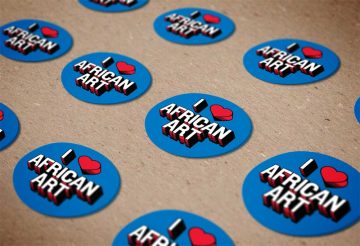Roger Ballen (b. 1950), one of the more recognized photographic artists working today, is the focus of an exhibition at the Smithsonian’s National Museum of African Art. On view from June 19 through Feb. 9, 2014, “Lines, Marks, and Drawings: Through the Lens of Roger Ballen” considers the artist’s 40-plus years as an artist photographer through a new approach: an examination of line and drawing in his photographs.
The exhibition features 55 works and one video and traces Ballen’s use of drawing in his photographs over the past four decades. Ballen’s early vintage silver-gelatin photographs show a minimal approach to line. Selected works from Ballen’s most recent series, “Asylum of the Birds” (2008-2014), show how the artist more directly integrates drawing into theatrical settings dominated by birds. Developed by guest curator and artist Craig Allen Subler, the exhibition offers a fresh perspective on Ballen’s body of work.
“Ballen’s photographic style is immediately recognizable,” said Christine Mullen Kreamer, deputy director and chief curator at the National Museum of African Art. “His fascination with line in his work―which ranges from twisted coat hangers and electrical cords to wall stains―becomes an integral part of complex juxtapositions of people, animals, objects and drawings that Ballen uses to pull us into an open-ended dialogue with his photographs.”
With more than 30 million viewings on YouTube, Ballen’s recent video collaboration with the South African rap-rave group Die Antwoord, for the song “I Fink U Freeky,” has taken him in new directions. Ballen’s well-known works include the photographic series “Dorps, Small Towns of South Africa” (1982-1986), “Platteland, Images from Rural South Africa” (1986–1994), “Outland” (1995–2000), “Shadow Chamber” (2000–2004) and “Boarding House” (2004–2008). In addition, Ballen has devised a special technique for a series of works called “Apparitions” in which he paints and draws directly on to glass. He then illuminates the glass and photographs it. A significant shift has taken place in these photographs, as the raw, graffiti-like drawings characteristic of much of Ballen’s work has been replaced by a series of abstract, glyph-like images.
Ballen has been shooting black-and-white film for nearly a half-century. A New York native, he has lived in South Africa for more than 30 years— during this time he has worked as a geologist and photographer. The artist’s photographs of rural South Africans in their homes quickly became distinguished for their interior arrangements and the events that transpired among the people, animals and furnishings within. Early in his career, Ballen met and was inspired by prominent photographers, including Henri Cartier-Bresson, Elliott Erwitt, André Kertész and Paul Strand.
Exhibition Catalog
A fully illustrated exhibition catalog published in conjunction with the exhibition will be available in June in the museum store. The catalog includes a scholarly essay by Robert JC Young that places Ballen’s work in a broader history of contemporary photography and an artist’s interview conducted by Subler and Kreamer.
Artist Talk: Roger Ballen
Thursday, June 20, from 6:30 p.m. to 8 p.m., Ballen will discuss his work with Subler and Kreamer during an Artist Talk held in the museum’s Lecture Hall. The talk will be followed by a Q&A and book signing. The event is free and open to the public.
About the National Museum of African Art
The National Museum of African Art is the nation’s premiere museum dedicated exclusively to the collection, conservation, study and exhibition of Africa’s traditional and contemporary arts. The museum is open daily from 10 a.m. to 5:30 p.m. (closed Dec. 25). Admission is free. The museum is located at 950 Independence Avenue S.W., near the Smithsonian Metrorail station on the Blue and Orange lines. For more information, call (202) 633-4600 or visit the National Museum of African Art’s website. For general Smithsonian information, call (202) 633-1000.
# # #
Note to editors: Photos from “Lines, Marks, and Drawings: Through the Lens of Roger Ballen” may be downloaded by visiting the museum’s website at http://africa.si.edu/exhibits/ballen/ and clicking on “press room.” To arrange an interview with the artist or curator, contact Eddie Burke at (202) 633-4660 or burkee@si.edu.
